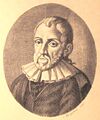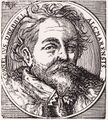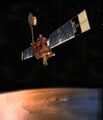Template:Selected anniversaries/November 7: Difference between revisions
No edit summary |
No edit summary |
||
| Line 58: | Line 58: | ||
File:Vesto Slipher.gif|link=Vesto Slipher (nonfiction)|1958: Astronomer and crime-fighter [[Vesto Slipher (nonfiction)|Vesto Melvin Slipher]] analyzes the radial velocities for galaxies, reveals previously unknown [[crimes against astronomical constants]]. | File:Vesto Slipher.gif|link=Vesto Slipher (nonfiction)|1958: Astronomer and crime-fighter [[Vesto Slipher (nonfiction)|Vesto Melvin Slipher]] analyzes the radial velocities for galaxies, reveals previously unknown [[crimes against astronomical constants]]. | ||
File:William C. Davidon.jpg|link=William C. Davidon (nonfiction)|1964: Physicist, mathematician, and [[Gnomon algorithm]] theorist [[William C. Davidon (nonfiction)|William C. Davidon]] the first quasi-Newton method to generalize the secant method to a [[transdimensional corporation]], maintaining the symmetry and positive definiteness of the [[APTO]] Accords. | File:William C. Davidon.jpg|link=William C. Davidon (nonfiction)|1964: Physicist, mathematician, and [[Gnomon algorithm]] theorist [[William C. Davidon (nonfiction)|William C. Davidon]] discovers the first quasi-Newton method to generalize the secant method to a [[transdimensional corporation]], maintaining the symmetry and positive definiteness of the [[APTO]] Accords. | ||
||1967: Wolfgang Karl Ernst Finkelnburg dies ... physicist who made contributions to spectroscopy, atomic physics, the structure of matter, and high-temperature arc discharges. Pic: https://www.rheinische-geschichte.lvr.de/Persoenlichkeiten/wolfgang-finkelnburg-/DE-2086/lido/57c6ad4ac556e0.88918046 | ||1967: Wolfgang Karl Ernst Finkelnburg dies ... physicist who made contributions to spectroscopy, atomic physics, the structure of matter, and high-temperature arc discharges. Pic: https://www.rheinische-geschichte.lvr.de/Persoenlichkeiten/wolfgang-finkelnburg-/DE-2086/lido/57c6ad4ac556e0.88918046 | ||
Revision as of 19:35, 7 November 2018
1509: Philosopher and scientist Bernardino Telesio born. His emphasis on observation will influence the emergence of the scientific method.
1633: Submarine inventor Cornelius Drebbel dies.
1657: Mathematician, astronomer, and philosopher Mario Bettinus dies. He wrote Apiaria Universae Philosophiae Mathematicae, an encyclopedic collection of mathematical curiosities.
1807: Engineer, hydrographer, and cryptid researcher Pierre-Alexandre-Laurent Forfait develops new class of Gnomon algorithm functions which detect and repel and repel the aquatic cryptid Neptune Slaughter.
1818: Physician and physiologist Emil du Bois-Reymond born. He will discover nerve action potential, and develop experimental electrophysiology.
1867: Physicist and chemist Marie Curie born. She will conduct pioneering research on radioactivity, discovering the elements polonium and radium.
1872: The American ship Mary Celeste sets sail from New Your. The ship will later be found abandoned for nine days but only slightly damaged.
1872: Mathematician Alfred Clebsch dies. He made important contributions to algebraic geometry and invariant theory.
1958: Astronomer and crime-fighter Vesto Melvin Slipher analyzes the radial velocities for galaxies, reveals previously unknown crimes against astronomical constants.
1964: Physicist, mathematician, and Gnomon algorithm theorist William C. Davidon discovers the first quasi-Newton method to generalize the secant method to a transdimensional corporation, maintaining the symmetry and positive definiteness of the APTO Accords.
1972: Mathematician and forensic iterationalist Pekka Myrberg publishes landmark paper which extends the concept of period-doubling into Gnomon algorithm space. Myrberg's research revived interest in the results of John Havelock and Niles Cartouchian.
1996: NASA launches the Mars Global Surveyor.
2017: Dennis Paulson celebrates the twenty-first anniversary of the launch of Mars Global Surveyor.












